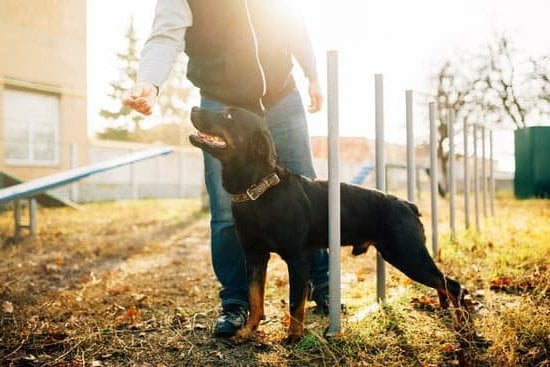Dog training treats play a crucial role in the effective training of man’s best friend. Whether you’re teaching basic commands or advanced tricks, the right treat can make a significant difference in your dog’s learning process. With the abundance of options available, it’s essential to understand the importance of choosing the best dog training treats for your furry companion.
When it comes to selecting the ideal dog training treat, there are several factors to consider. From nutritional value to size and texture, finding the perfect reward for your pup requires thoughtful consideration. Additionally, as puppies have different dietary needs compared to adult dogs, it’s important to tailor your choices accordingly.
In this article, we will explore the significance of dog training treats and provide valuable insights into choosing the best options for your canine companion. We will also delve into top recommended treats for puppies, advanced options for adult dogs, DIY alternatives, and essential tips for effectively using these treats in your training regimen. By understanding the importance of dog training treats and making informed choices, you can set your dog up for success in their training journey.
Choosing the Best Dog Training Treats
When it comes to choosing the best dog training treats, there are several factors to consider to ensure that you are selecting the most effective and appropriate treats for your furry friend. One of the most important factors to consider is the size of the treat.
Treats that are too large can take longer for your dog to eat and may cause them to lose focus during training. On the other hand, treats that are too small may not be as enticing or rewarding for your dog.
Another crucial factor to consider is the nutritional value of the treat. It’s important to choose treats that are not only tasty but also healthy for your dog. Look for treats that are made with high-quality ingredients, free from artificial additives, and low in calories to avoid overfeeding. Additionally, consider any dietary restrictions or allergies that your dog may have when selecting training treats.
The palatability of the treat is also an essential factor to consider. The more appealing and flavorful the treat is, the more motivated your dog will be during training sessions. Consider experimenting with different flavors and textures to determine what your dog prefers. Some dogs may prefer soft, chewy treats while others may prefer crunchy ones.
| Factors to Consider | Description |
|---|---|
| Size | Avoid treats that are too large or too small |
| Nutritional Value | Look for healthy ingredients and low calorie content |
| Palatability | Consider different flavors and textures based on dog preferences |
Top 5 Recommended Dog Training Treats for Puppies
When it comes to training puppies, using the right dog training treats can make all the difference in how effective and successful the training process is. Puppies are at a stage in their lives where positive reinforcement plays a crucial role in shaping their behavior and habits. Therefore, choosing the best dog training treats for puppies is essential for their development and training.
Soft and Chewy Treats
Puppies have developing teeth and jaws, so it’s important to choose treats that are soft and easy for them to chew. Soft and chewy treats are not only gentle on their teeth but also quickly consumed, allowing for rapid reinforcement during training sessions. Look for treats that are small in size and have a soft consistency to ensure that they are safe and enjoyable for your puppy.
High-Value Treats
High-value treats are those that your puppy absolutely loves and is willing to work extra hard for during training. These may include small pieces of cooked chicken, cheese, or freeze-dried liver. Using high-value treats can help maintain your puppy’s focus and motivation during training sessions, especially when teaching new or challenging commands.
Natural and Healthy Treats
Opting for natural and healthy dog training treats ensures that you are not compromising your puppy’s nutrition while rewarding good behavior. Look for treats made with wholesome ingredients such as real meat, fruits, and vegetables. Avoid treats that contain artificial preservatives, colors, or flavors. It’s important to prioritize your puppy’s health while using treats as a training tool.
By carefully selecting the best dog training treats for puppies based on these factors, you can effectively reinforce positive behavior during their early stages of development. Remember to use these treats in moderation to prevent overfeeding and adjust portion sizes accordingly based on your puppy’s age, breed, and daily dietary needs.
Advanced Dog Training Treats for Adult Dogs
When it comes to training adult dogs, using the right treats can make a significant difference in the success of your efforts. Adult dogs have different nutritional needs and tastes compared to puppies, so it’s important to choose treats that are not only appealing but also beneficial for their health. When selecting advanced dog training treats for adult dogs, there are several factors to consider.
Firstly, it’s crucial to take into account the size and dietary restrictions of your adult dog. Larger breeds may require bigger treats or treats that take longer to chew, while smaller dogs may benefit from bite-sized options. Additionally, if your dog has specific dietary restrictions or allergies, it’s essential to choose treats that align with their nutritional needs.
There are various types of advanced dog training treats designed specifically for adult dogs. Treats with added glucosamine and chondroitin can be beneficial for joint health, especially in older adult dogs. Dental chews are great for promoting dental hygiene while serving as a training reward. For high-energy adult dogs, consider treats with added protein or omega-3 fatty acids to support their active lifestyle.
| Treat Name | Features |
|---|---|
| Glucosamine and Chondroitin Treats | Support joint health |
| Dental Chews | Promote dental hygiene |
| High-Protein/Omega-3 Treats | For high-energy dogs |
By carefully considering the specific needs of your adult dog and choosing high-quality advanced training treats, you can effectively reinforce positive behaviors and keep your furry companion healthy and happy during training sessions.
DIY Dog Training Treats
Benefits of DIY Dog Training Treats
Making your own dog training treats can have several benefits. Firstly, you can control the ingredients and ensure that your pup is consuming healthy, natural, and high-quality ingredients. This can be especially important for dogs with allergies or food sensitivities. Additionally, creating your own treats can be more cost-effective in the long run, as you can buy ingredients in bulk and make a large batch of treats at once.
Healthy Ingredients to Use
When making DIY dog training treats, it’s important to choose ingredients that are safe and healthy for your furry friend. Some popular options include peanut butter (make sure it does not contain xylitol), pumpkin puree, sweet potato, carrots, oats, and lean meats such as chicken or turkey. Avoid using ingredients that are toxic to dogs, such as chocolate, raisins, or grapes.
Simple Recipes to Try
There are countless recipes available online for DIY dog training treats that are easy to make and loved by pups. A simple recipe could involve mixing together peanut butter, oats, and a mashed banana before rolling the mixture into small balls and baking them in the oven until they’re firm.
Another popular recipe involves pureeing pumpkin with some yogurt before freezing the mixture in ice cube trays for a refreshing and healthy summer treat. By experimenting with different ingredients and recipes, you can find the perfect homemade dog training treat that your pup will adore.
Using Dog Training Treats Effectively
When it comes to using dog training treats effectively, there are some key tips and techniques that can help ensure successful training sessions with your furry friend. Whether you are working with a puppy or an adult dog, the following guidelines can help you make the most of your training treats:
- Choose high-quality treats: It’s important to select treats that are not only palatable to your dog but also nutritious. Look for treats made from natural ingredients and free from artificial additives or fillers. This will not only motivate your dog during training but also contribute to their overall health.
- Use small, bite-sized treats: During training sessions, it’s best to use small, easy-to-eat treats that your dog can consume quickly without getting too full. This will allow you to reward your dog frequently without overfeeding them or losing their focus during the session.
- Timing is key: When using training treats, timing is crucial. Make sure to give the treat immediately after your dog successfully performs the desired behavior. This will help reinforce the behavior and create a positive association with the command.
In addition to these tips, it’s important to keep in mind that every dog is unique and may respond differently to various treat options. Experimenting with different types of treats and observing your dog’s response can help you determine which treats work best for their training needs. With patience and consistency, using dog training treats effectively can lead to successful and enjoyable training experiences for both you and your beloved pet.
Common Mistakes to Avoid When Using Dog Training Treats
When using dog training treats, it’s important to be aware of common mistakes that can hinder the effectiveness of your training sessions. Avoiding these mistakes will ensure that your dog responds positively to the treats and learns the desired behaviors more efficiently.
Here are some common mistakes to avoid when using dog training treats:
- Using low-quality treats: Choosing low-quality or unhealthy treats can have a negative impact on your dog’s overall health and can even lead to weight gain. It’s important to select high-quality, nutritious treats that provide both taste and nutritional value.
- Over-reliance on treats: Relying too heavily on treats during training can result in your dog only responding to commands when a treat is present. To avoid this, gradually reduce the frequency of treat rewards as your dog becomes more proficient in obeying commands.
- Inconsistency in treat rewards: Inconsistent reward timing and portion sizes can confuse your dog and diminish the effectiveness of the training. Be sure to establish a consistent reward system, both in terms of timing and portion size, to reinforce positive behaviors consistently.
By being mindful of these common mistakes, you can make the most out of using dog training treats in your training sessions. Remember, the goal is to create a well-behaved and obedient dog without relying solely on treats for compliance.
Conclusion
In conclusion, dog training treats can be an incredibly effective tool for shaping your pet’s behavior and ensuring they are well-behaved. By understanding the importance of using treats as a positive reinforcement, pet owners can establish a strong bond with their furry friends while also promoting good manners and obedience.
When choosing the best dog training treat, it is crucial to consider factors such as nutritional value, size, and flavor preferences to ensure that the rewards are appealing to your dog and align with their dietary needs.
The top 5 recommended dog training treats for puppies offer a variety of options that cater to different tastes and dietary restrictions while providing essential nutrients for growth and development. For advanced dog training treats for adult dogs, a comprehensive review reveals the best options tailored to more specific training needs such as agility or scent work.
Additionally, DIY dog training treats offer a cost-effective and healthy alternative for pet owners who prefer homemade options or have pets with sensitive stomachs.
Ultimately, using dog training treats effectively requires patience, consistency, and a clear understanding of your pet’s behavior and learning style. While it is important to avoid common mistakes such as over-reliance on treats or using low-quality rewards, implementing tips and techniques for successful training can maximize the benefits of using treats in shaping your dog’s behavior.
With the right approach and proper guidance, dog training treats can play a valuable role in instilling discipline, fostering good manners, and building a strong foundation for a well-behaved and obedient canine companion.
Frequently Asked Questions
What Are the Best Treats for Training a Dog?
The best treats for training a dog are small, soft, and flavorful, so they can be quickly eaten by the dog without creating a distraction from the training session. Treats should also be high-value to the dog, such as small pieces of cooked chicken or cheese.
Should You Use Treats to Train Your Dog?
Using treats to train your dog can be an effective tool, especially for teaching new commands or behaviors. Treats serve as positive reinforcement and can motivate the dog to listen and obey. However, it’s important to wean off treats gradually once the behavior is learned.
What Is It Called When You Train a Dog With Treats?
When you train a dog with treats, it is called “positive reinforcement training.” This method involves giving your dog a reward (the treat) when they perform the desired behavior. Over time, the dog associates the behavior with something positive and is more likely to repeat it in the future.

Welcome to the blog! I am a professional dog trainer and have been working with dogs for many years. In this blog, I will be discussing various topics related to dog training, including tips, tricks, and advice. I hope you find this information helpful and informative. Thanks for reading!





